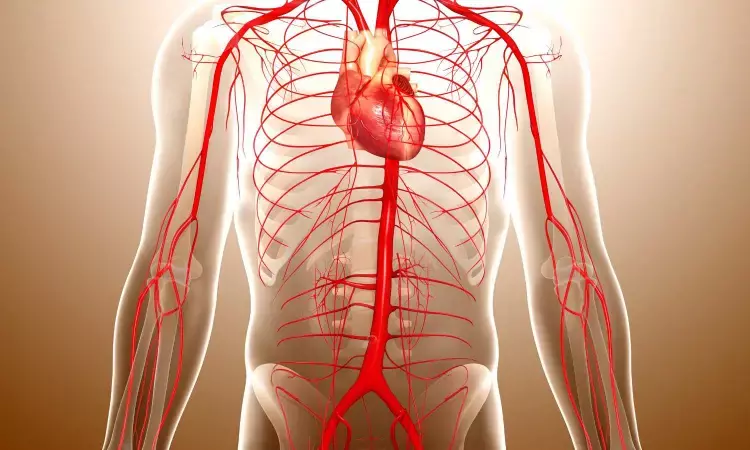- Home
- Medical news & Guidelines
- Anesthesiology
- Cardiology and CTVS
- Critical Care
- Dentistry
- Dermatology
- Diabetes and Endocrinology
- ENT
- Gastroenterology
- Medicine
- Nephrology
- Neurology
- Obstretics-Gynaecology
- Oncology
- Ophthalmology
- Orthopaedics
- Pediatrics-Neonatology
- Psychiatry
- Pulmonology
- Radiology
- Surgery
- Urology
- Laboratory Medicine
- Diet
- Nursing
- Paramedical
- Physiotherapy
- Health news
- Fact Check
- Bone Health Fact Check
- Brain Health Fact Check
- Cancer Related Fact Check
- Child Care Fact Check
- Dental and oral health fact check
- Diabetes and metabolic health fact check
- Diet and Nutrition Fact Check
- Eye and ENT Care Fact Check
- Fitness fact check
- Gut health fact check
- Heart health fact check
- Kidney health fact check
- Medical education fact check
- Men's health fact check
- Respiratory fact check
- Skin and hair care fact check
- Vaccine and Immunization fact check
- Women's health fact check
- AYUSH
- State News
- Andaman and Nicobar Islands
- Andhra Pradesh
- Arunachal Pradesh
- Assam
- Bihar
- Chandigarh
- Chattisgarh
- Dadra and Nagar Haveli
- Daman and Diu
- Delhi
- Goa
- Gujarat
- Haryana
- Himachal Pradesh
- Jammu & Kashmir
- Jharkhand
- Karnataka
- Kerala
- Ladakh
- Lakshadweep
- Madhya Pradesh
- Maharashtra
- Manipur
- Meghalaya
- Mizoram
- Nagaland
- Odisha
- Puducherry
- Punjab
- Rajasthan
- Sikkim
- Tamil Nadu
- Telangana
- Tripura
- Uttar Pradesh
- Uttrakhand
- West Bengal
- Medical Education
- Industry
Link Between Fluoroquinolone Use and Aortic Aneurysm or Dissection: Study Finds No Significant Association

A recent comprehensive study published in JAMA Cardiology has delved into the potential connection between fluoroquinolone use and the risk of aortic aneurysm or dissection, shedding light on a topic that has garnered significant attention. While earlier non interventional studies had suggested an association, this new research, which employed multiple study designs and databases, reveals a more nuanced perspective.
Conducted by a team of researchers led by Jeremy P. Brown, the study involved cohort and case-crossover investigations conducted in two UK primary care databases. The aim was to rigorously examine the potential link between fluoroquinolone use and the risk of aortic aneurysm or dissection, taking into account various factors that could impact the results.
The cohort study included a substantial number of adults who were prescribed either fluoroquinolones or cephalosporins between April 1997 and December 2019. The researchers meticulously analysed data from the Clinical Practice Research Datalink Aurum and GOLD primary care records, cross-referencing them with hospital admissions data. This comprehensive approach allowed for a robust assessment of any potential association.
Cohort Study: Exploring Prescription Patterns and Hospitalization
● The cohort study involved an extensive dataset, including 3,134,121 adults from Aurum and 452,086 from GOLD, who were prescribed either fluoroquinolones or cephalosporins between April 1997 and December 2019. Initial crude analyses suggested an increased risk of hospitalization with aortic aneurysm or dissection in individuals prescribed fluoroquinolones, compared to those prescribed cephalosporins.
● The pooled hazard ratio for this association was 1.28 (95% CI, 1.13-1.44; P < .001). However, crucially, when potential confounding factors were factored into the analysis, this initial association dissipated.
● The adjusted hazard ratio, after accounting for these confounders, was 1.03 (95% CI, 0.91-1.17; P = .65). This marked attenuation of the association emphasizes the significance of considering various factors that could impact the observed outcomes.
Case-Crossover Study: Analyzing Hospitalized Individuals
● The case-crossover study focused on individuals who were hospitalized with aortic aneurysm or dissection. The dataset comprised 84,841 individuals from Aurum and 10,357 from GOLD.
● Comparing the use of fluoroquinolones to nonuse, an initial association between fluoroquinolone use and an increased risk of hospitalization for aortic aneurysm or dissection was observed.
● However, when compared to other antibiotics, including cephalosporin, trimethoprim, and co-amoxiclav, no statistically significant association was evident. The pooled odds ratio for fluoroquinolone use versus cephalosporin was 1.05 (95% CI, 0.87-1.27), and versus trimethoprim was 0.89 (95% CI, 0.75-1.06), and versus co-amoxiclav was 0.98 (95% CI, 0.82-1.18).
● These results underscore the complexity of assessing associations and highlight the importance of rigorous analysis.
These findings challenge previous assumptions and provide reassurance regarding the safety of fluoroquinolones in relation to aortic aneurysm or dissection. The study emphasizes the importance of considering potential confounders when assessing such associations, and highlights the need for rigorous research to draw accurate conclusions.
Reference:
Brown, J. P., Wing, K., Leyrat, C., Evans, S. J., Mansfield, K. E., Wong, A. Y. S., Smeeth, L., Galwey, N. W., & Douglas, I. J. (2023). Association between fluoroquinolone use and hospitalization with aortic aneurysm or aortic dissection. JAMA Cardiology. https://doi.org/10.1001/jamacardio.2023.2418
Dr Kamal Kant Kohli-MBBS, DTCD- a chest specialist with more than 30 years of practice and a flair for writing clinical articles, Dr Kamal Kant Kohli joined Medical Dialogues as a Chief Editor of Medical News. Besides writing articles, as an editor, he proofreads and verifies all the medical content published on Medical Dialogues including those coming from journals, studies,medical conferences,guidelines etc. Email: drkohli@medicaldialogues.in. Contact no. 011-43720751


